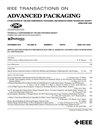A Wideband Common-Mode Suppression Filter for Bend Discontinuities in Differential Signaling Using Tightly Coupled Microstrips
引用次数: 69
Abstract
A new type of bend is proposed that reduces differential-to-common mode conversion occuring at the bend discontinuity in coupled microstrip lines for high-speed digital circuits. Simultaneously, great care has been taken to minimize the differential reflection coefficient and insertion loss, leading to an overall improved signal integrity. This is achieved by tapering the microstrip lines to tightly or very tightly coupled ones in the area of the bend. Full-wave simulations in the DC to 6 GHz frequency range show that over 9 dB and 14 dB suppression of conversion noise is achieved for tightly coupled and very tightly coupled bends, respectively. Also for these new structures, with a total length of 100 mm, the insertion loss remains below 0.6 dB. Measurements on prototype bends show very good agreement with full-wave simulations. Also time domain measurements demonstrate the significant reduction in conversion noise while keeping return loss low. Moreover, for design purposes, a dedicated circuit model which closely matches the full-wave characteristics of the proposed bends is presented.基于紧密耦合微带的差分信号弯曲不连续宽带共模抑制滤波器
针对高速数字电路中耦合微带线在弯曲不连续处产生的差共模转换问题,提出了一种新型弯曲方式。同时,该系统还非常小心地将微分反射系数和插入损耗降至最低,从而提高了信号完整性。这是通过将微带线逐渐变细,使其在弯曲区域紧密或非常紧密地耦合在一起来实现的。在直流至6 GHz频率范围内的全波仿真表明,紧耦合弯管和极紧耦合弯管分别实现了超过9 dB和14 dB的转换噪声抑制。此外,对于这些总长度为100mm的新结构,插入损耗保持在0.6 dB以下。原型弯管的测量结果与全波模拟结果非常吻合。时域测量也表明在保持低回波损耗的同时显著降低了转换噪声。此外,为了设计目的,提出了一个与所提出的弯管的全波特性密切匹配的专用电路模型。
本文章由计算机程序翻译,如有差异,请以英文原文为准。
求助全文
约1分钟内获得全文
求助全文

 求助内容:
求助内容: 应助结果提醒方式:
应助结果提醒方式:


